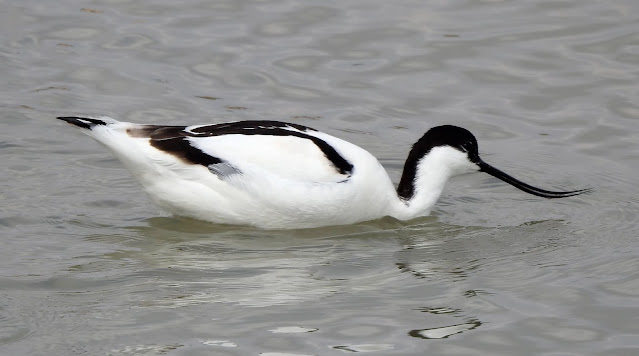The pied avocet, Recurvirostra avosetta, presents a striking silhouette with its bold black and white plumage. This large wader, belonging to the avocet and stilt family, Recurvirostridae, is adorned with a distinctive black cap and black markings on its wings and back, contrasting sharply against its otherwise white body. The species is noted for its elegant, upturned bill and elongated, bluish legs, which add to its graceful demeanor.
Adult pied avocets measure approximately 16.5–17.75 inches in length, with a wingspan stretching around 30–31.5 inches. Their long legs and upturned bills, measuring about 2.95–3.35 inches and 3–4 inches respectively, are key features for identification. Both sexes appear similar, while juveniles can be distinguished by their more greyish and sepia tones.
These birds favor shallow lakes with brackish water and exposed mudflats, which provide ideal foraging and breeding grounds.
The pied avocet breeds across temperate Europe and extends across the Palearctic to Central Asia and the Russian Far East. It is a migratory species, with most individuals wintering in Africa or southern Asia. Some, however, remain in the milder parts of their range during winter, such as southern Spain and southern England.
Pied avocets forage in shallow waters or on mudflats, often employing a unique side-to-side scything motion with their bills to capture prey. They primarily consume crustaceans and insects. During the breeding season, they nest on open ground, often forming small groups and sometimes associating with other wader species. Their nests are typically lined scrapes or mounds of vegetation, where they lay three to five eggs.
The avocet's call is a distinctive, melodious "kluit kluit," which carries far across their watery habitats.
Pied avocets establish breeding territories in shallow brackish waters, where they lay their eggs in simple ground nests. These nests may be lined with materials or placed on mounds of vegetation to protect them from flooding.
The diet of the pied avocet consists mainly of crustaceans and insects, which they adeptly capture with their specialized bill.









%20%201.jpg)
%20%202.jpg)
%20%204.jpg)



































%2020.jpg)


%2021.jpg)